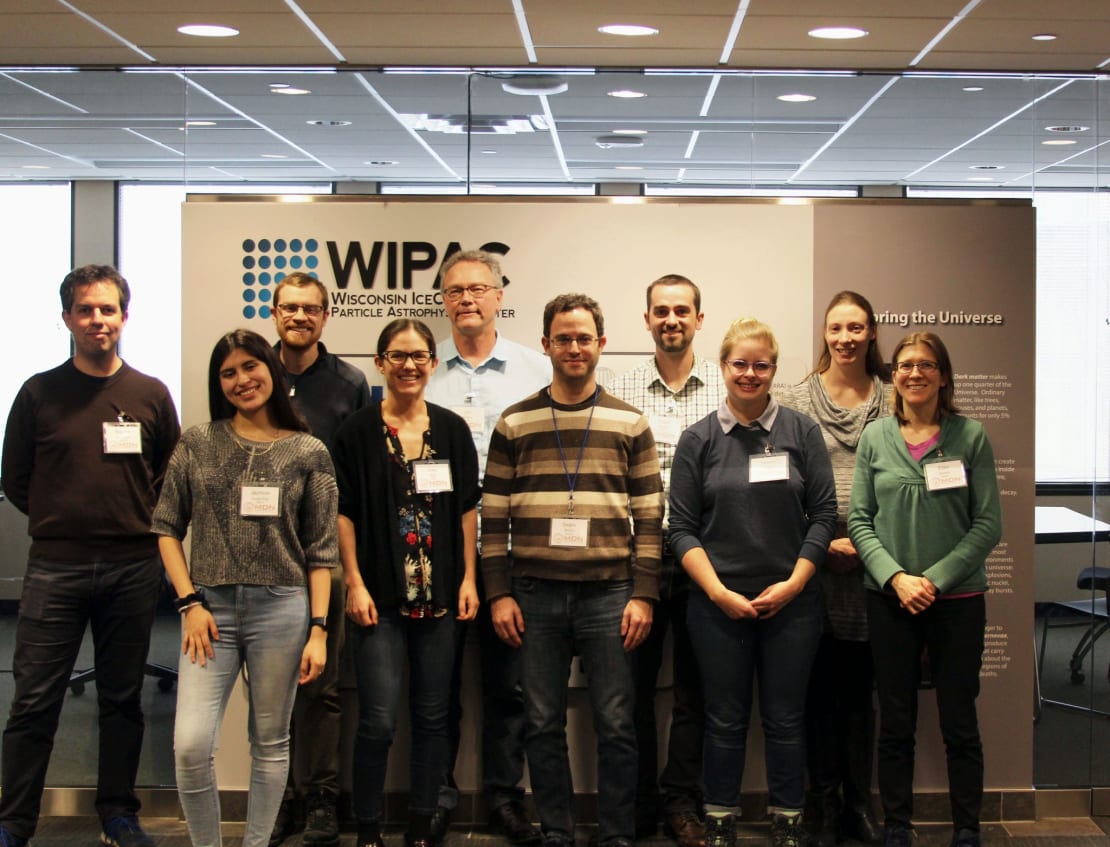This past weekend, the first members of the new Multimessenger Diversity Network (MDN) met at the University of Wisconsin–Madison, where they were hosted by the Wisconsin IceCube Particle Astrophysics Center, headquarters of the IceCube Neutrino Observatory.
The MDN foundational members are LIGO, VERITAS, and LSST observatories together with IceCube. The LIGO and IceCube research facilities were built and are operated with support from the National Science Foundation, with contributions from several international agencies. LSST and VERITAS were constructed with funds from the National Science Foundation and the Department of Energy, along with other international agencies. The MDN is an initiative under the umbrella of the INCLUDES National Network, a U.S. statewide program and, along with multimessenger astrophysics, one of the 10 “Big Ideas” for future NSF investments.

The two-day workshop was designed to discuss the vision, goals, and expected outcomes of the network and included ample room for group-wide discussion as well as small group working time. At the end of the meeting, Amy Furniss, assistant professor at California State University, East Bay and representative from VERITAS, reflected, “The potential of MDN is tremendous. Getting everybody in the same room for two days, it became clear that we have so much we can learn from each other and do together in the field to make progress.”
MDN representatives are poised to become diversity engagement fellows in their collaborations and observatories. This weekend’s meeting included a talk on community management from Lou Woodley, center director at the AAAS Center for Scientific Collaboration and Community Engagement. The CSCCE will offer further training to MDN members at the next in-person meeting of the network in July. Ultimately, MDN representatives will be liaisons between the different observatories and collaborations as well as promoters of collaborative efforts to broaden participation in the field. Segev BenZvi, assistant professor at the University of Rochester and a representative from IceCube, said, “Through MDN, we have an opportunity to promote multimessenger astronomy as an inclusive field. My hope is that the group can build up resources on successful (and unsuccessful) practices to improve equity and diversity, and make it very easy for members of our field to emulate the successes.”
The MDN, a need and an opportunity
Multimessenger astrophysics is coming into its own as a network of networks: scientific collaborations with members all around the world, working in experiments funded by agencies in dozens of countries and hosted by facilities in exciting and sometimes remote places on Earth and in space.
During the last few years, some of the most important results in astrophysics and astronomy have come from collaborative multimessenger research. Now, this successful collaboration can also be the origin of transformative initiatives to broaden participation in astrophysics, physics, and astronomy.
With support from the NSF INCLUDES program, IceCube invited other observatories to launch this network. After the kick-off meeting in Madison, the MDN will be looking for new partners in neutrino, gravitational-wave, gamma-ray, and cosmic-ray astronomy along with astrophysics. Experiments exploring the universe with lower energy electromagnetic radiation are also welcome. As with science outcomes, every new partner adds valuable insights and expertise to the field.

Astrophysics observatories are led and run by huge international teams, with great diversity in terms of cultures and geographical origins. However, as with many scientific disciplines, they lack diversity in terms of other demographic indicators, like gender and race, that have been shown to be sources of inequality.
Increasing diversity and inclusion in multimessenger astronomy is not an easy endeavor. One challenge the multimessenger community faces is connecting with underrepresented communities who do not see suitable role models within these collaborations. The Multimessenger Diversity Network brings together several collaborations in the field to share knowledge, experiences, and practices around broadening participation and to develop shared resources and receive training. After a weekend of insightful discussions, Ellen Bechtol, outreach specialist at WIPAC and the MDN community manager, said, “It was great meeting everyone face to face. I think we all feel enthusiastic about our next steps and I look forward to what we will accomplish together.”
The next steps of the MDN are continued monthly virtual meetings, a face-to-face meeting and training session with AAAS in July, and collaboration toward a white paper summarizing a long-term strategy for this new INCLUDES network, so that it becomes an enduring multimessenger collaborative effort.